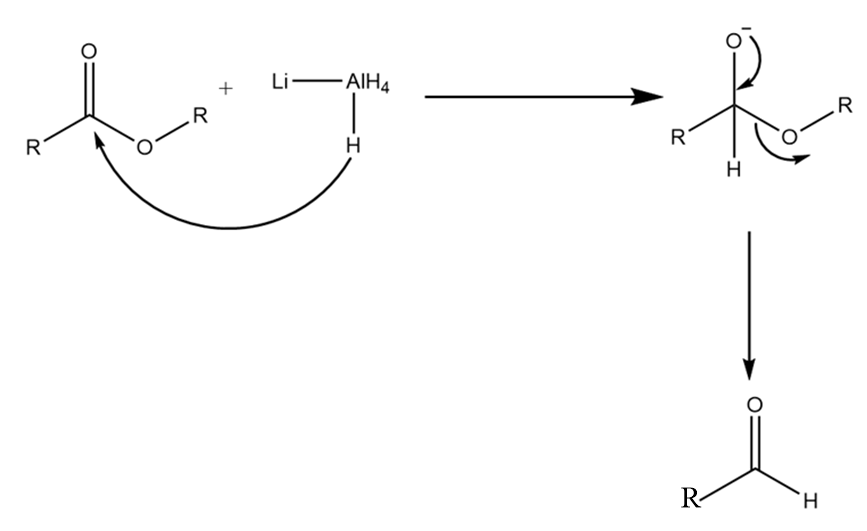
How reduction of the following takes place:
i.Reduction of acetaldehyde
ii.Reduction of ester
Answer
428.4k+ views
Hint: When a loss in oxygen atom i.e., an electronegative element or a gain in hydrogen atom i.e., electropositive element is observed within a compound during an organic reaction, then it is said to be a reduction reaction. The reduction of a compound leads to net decrease in the electronegativity of the compound.
Complete answer: The reduction of the given compounds takes place as follows:
(a) Reduction of acetaldehyde:
Step-1: Reaction of acetaldehyde with

Step-2: Protonation of the given compound occurs in the presence of water molecules to form primary alcohol. The reaction proceeds as follows:

Hence, formation of ethanol takes place on the reduction of acetaldehyde.
(b) Reduction of ester:
Step-1: The hydrogen ion from

Step-2: The hydrogen ion of

Hence, on reduction of ester the formation of primary alcohol takes place.
Note:
It is important to note that
Complete answer: The reduction of the given compounds takes place as follows:
(a) Reduction of acetaldehyde:
Step-1: Reaction of acetaldehyde with

Step-2: Protonation of the given compound occurs in the presence of water molecules to form primary alcohol. The reaction proceeds as follows:

Hence, formation of ethanol takes place on the reduction of acetaldehyde.
(b) Reduction of ester:
Step-1: The hydrogen ion from

Step-2: The hydrogen ion of

Hence, on reduction of ester the formation of primary alcohol takes place.
Note:
It is important to note that
Recently Updated Pages
Master Class 12 Business Studies: Engaging Questions & Answers for Success

Master Class 12 English: Engaging Questions & Answers for Success

Master Class 12 Social Science: Engaging Questions & Answers for Success

Master Class 12 Chemistry: Engaging Questions & Answers for Success

Class 12 Question and Answer - Your Ultimate Solutions Guide

Master Class 11 Economics: Engaging Questions & Answers for Success

Trending doubts
Draw a labelled sketch of the human eye class 12 physics CBSE

a Tabulate the differences in the characteristics of class 12 chemistry CBSE

Which one of the following is a true fish A Jellyfish class 12 biology CBSE

Why is the cell called the structural and functional class 12 biology CBSE

Differentiate between homogeneous and heterogeneous class 12 chemistry CBSE

Write the difference between solid liquid and gas class 12 chemistry CBSE




